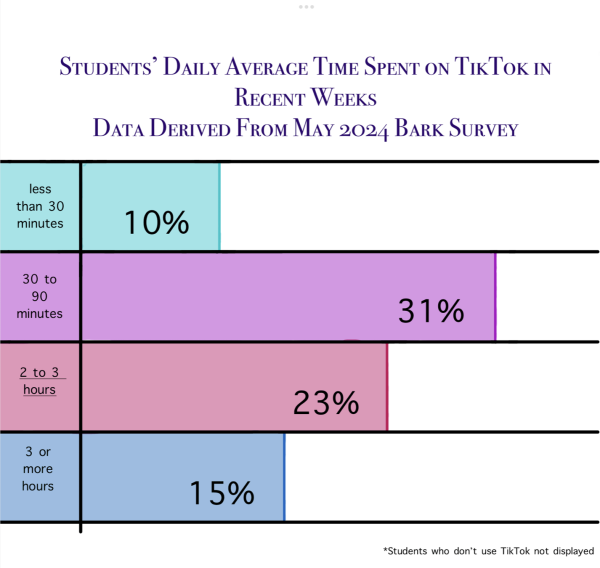Pot. Marijuana. Weed. Za. Regardless of its ever-evolving name, cannabis is not new to Marin County. The infamous holiday April 20, or 4/20, began at San Rafael High School in the 1970s, when a group of five students nicknamed “The Waldos” would meet every day after school at 4:20 to smoke. As 4/20 was popularized by the Grateful Dead and the hippie movement of the 70s, its national impact can be traced back to our home. Although weed has been a prominent part of the culture in Marin for over 50 years, the way we perceive and interact with this drug is changing, due to an uptick in usage and acceptance.
Generation Z — those born between 1997 to 2010 — is drinking noticeably less than previous generations, with alcohol consumption falling by eight percent among college-aged kids. According to Oregon Health and Science University, teen cannabis usage has risen by 245 percent over the past 20 years, with 52.9 percent claiming they use it to ease anxiety.
In all demographics — not just teenagers — the number of weed users in the United States is skyrocketing; data from the US National Survey on Drug Use and Health found that daily and near-daily weed usage in the US has risen by nearly 225 percent from 2015 to 2022. Daily weed usage has even surpassed that of alcohol. In 2022, 17.7 million Americans reported using cannabis daily, compared to the 14.4 million who admitted to drinking alcohol daily. Just 30 years prior, the number of alcohol users outpaced weed users tenfold.
Many experts are attributing this rise to easy access to edibles. Over 60 percent of Redwood students who use marijuana ingest it through edible treats made with Tetrahydrocannabinol (THC). According to the Colorado Cannabis Chamber of Commerce, edible sales make up nearly half of legal marijuana sales.
Weed Infographic by Linnea Koblik
This shift to edibles could be motivated by several reasons, whether it’s chasing a more intense high, easier accessibility or perceived health benefits. People are often led to believe that edibles are safer than smoking because they don’t damage lung tissue and blood vessels. Edible users don’t have to worry about the particulate matter from inhaling bits of rolled paper and the plant itself. They are also assumed to be less addictive than smoking because they take longer to “kick in”; users feel the effect of smoking marijuana almost instantly, while an edible can take 30 minutes to multiple hours to kick in.
One anonymous student, who will be referred to as Charlie, uses cannabis weekly and takes edibles often; he spoke about his experience with that form of weed.
“ I like the high. It’s a different high than smoking. I’d rather take an edible and be by myself and play Fortnite or something with my friends,” Charlie said. “When I get bored, I like to do [edibles] specifically because I just have nothing better to do. I have hours to burn and I’m bored.”
An anonymous parent, who will be referred to as Lucas, said that not only kids have hopped on the edible trend, but adults as well. His family has a history of weed usage, but the majority have switched from smoking to edibles due to health concerns.
“ Especially with my family, we’ve all been smokers and they’ve mostly gone to edibles,” Lucas said. “ At our age, smoking’s just not a good alternative. So I think edibles offer something else that doesn’t kill your lungs.”
In many cases, parents in Marin using edibles has led to a more permissive attitude towards cannabis use. With parents replacing nightly glasses of wine with an edible or giving their kids access to their stash, many families are under the impression that weed is a safer alternative to other options.
“ My dad uses weed, and both of my parents know I use weed,” Charlie said.
Lucas is among some parents in Marin who would prefer their child to take an edible rather than smoke weed or drink alcohol. With a history of addiction in his family, he prefers his child to ask him for an edible rather than experiment on her own or damage her lungs by smoking.
“ That’s kind of why I have [edibles] these days… I’d rather [my kid] ask for an edible than ask for me to roll her a joint,” Lucas said.
Despite the somewhat relaxed attitude towards weed in Marin, there are still many dangers and risks that teens and adults often overlook.
One danger can be accidentally miscalculated doses. Users will often eat an edible and not feel immediate effects, so they take more and end up with an extremely high dosage in their system. A study done by the American College of Physicians found that people who took edibles over smoking were more likely to end up in the emergency room. Too much THC in your system can lead to extreme paranoia or panic attacks, increased heart rate and blood pressure, severe nausea, vomiting and delusions. Even small doses can be too strong for many people because edibles have much stronger effects.
“Smoking is more immediate and goes straight to your head. With edibles, it’s delayed and more of a body feel [or] a body high,” Lucas said.
According to the Canadian Center on Substance Use and Addiction, edible cannabis travels to the liver and stomach before reaching the bloodstream. In the liver, the THC is turned into a metabolite that induces more, psychoactive effects. Weed inhalation never reaches the liver, so the effects are less strong.
Dr. Christina Borbely, a senior advisor on youth drug prevention for the county of Marin, warns against the use of any form of weed, including edibles, citing loss of brain function as a major reason.
“Cannabis causes cognitive impairment, especially in the frontal lobe of the brain, which gives you good things like the ability to anticipate consequences, the ability to plan, the ability to process information and to evaluate risk and reward. That’s a really good part of your brain that you don’t want to impair,” Borbely said.
Some weed users describe what can be called a “weed hangover” or “brain fog,” as an anonymous smoker, who will go by Aiden, described.
“[There is] definitely brain fog after you use [weed]. The next day, you’re a lot slower. I found one way to get rid of it; just exercising or sweating it out helps a lot,” Aiden said.
A study conducted by the University of Colorado School of Medicine found that 63 percent of lifetime users had reduced brain activity when asked to perform memory and cognition tests in a Magnetic Resonance Imaging (MRI) machine. According to the scans, the areas of the brain that differed the most between smokers and non-smokers were the regions responsible for decision-making and short-term memory.
Not only does weed affect the ability to think and process information, but it also has been proven to cause a lack of motivation.
“The data shows that teens who use cannabis regularly are more likely to have absences and drop out [of] school,” Borbely said. “It can also affect their motivation in school. Cannabis users are more likely to experience a motivational disorder, meaning they lack the will to participate in activities that benefit them in life.”
The trend is clear; weed usage is spiking nationwide and Marin County is no exception. With the dangers of smoking becoming ever-apparent, many have shifted to edibles as their primary source of cannabis. Parents make up a large faction of this group, and many even provide their own children with edibles, hoping they steer clear of smoking or taking other illicit drugs. Yet, weed usage comes with a litany of health complications, especially for those with brains that are still developing.
“Young people may want to pause and reflect on their motivation when considering or trying something new like cannabis,” Borbely said. “If a person feels overwhelmed, a need to numb or check out, or a loss of control over the urge to try or use, they can get relief without risking the harm of substances. Seek healthy adventures and stuff to do that strengthens you, your wellness and your body.”

![“What sold me on [creatine] is its impact on brain health. Some studies show it supports mood by regulating how neurotransmitter building blocks are produced. Creatine helps with mood in the same way an [anti-depressant] helps with mood,” Baker said.](https://redwoodbark.org/wp-content/uploads/2025/03/unjAxWLY4AvG7cPOCe5ht0J0AFo68itewOijByLJ-1200x800.jpg)






